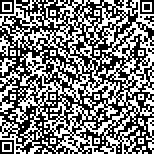刘邦忠,钟宗烨,刘光华,等.体外冲击波疗法对膝骨关节炎患者下肢功能及关节软骨的影响[J].中华物理医学与康复杂志,2019,41(7):494-498
扫码阅读全文

|
| 体外冲击波疗法对膝骨关节炎患者下肢功能及关节软骨的影响 |
|
| |
| DOI:DOI:10.3760/cma.j.issn.0254-1424.2019.07.003 |
| 中文关键词: 体外冲击波疗法 膝骨关节炎 下肢功能 关节软骨 |
| 英文关键词: Extracorporeal shock wave therapy Knee osteoarthritis Lower limb function Articular cartilage |
| 基金项目:上海市青浦区科技发展基金项目(青科发2016-03) |
|
| 摘要点击次数: 6850 |
| 全文下载次数: 7011 |
| 中文摘要: |
| 目的 观察体外冲击波疗法(ESWT)对膝骨关节炎(KOA)患者的下肢功能、安全性及关节软骨的影响。 方法 将符合纳入标准的63例KOA患者根据治疗方法的不同按随机数字表法分为ESWT组(32例)和对照组(31例)。2组均给予常规膝关节肌力训练,每日3组训练,每组10次,连续训练4周;ESWT组辅以体外冲击波疗法,压力2.5 bar,频率8.0 Hz,频次2000,每周1次,共4次;对照组患者除冲击波压力设置为0.2 bar,其余治疗步骤及治疗参数与ESWT组保持一致,共治疗4周。分别于治疗前、第5周及第12周,测评和比较2组患者的视觉模拟评分法(VAS)、西安大略和麦克马斯特大学骨关节炎(WOMAC)指数、奎森指数评分及膝关节软骨磁共振检查T2值,并记录患者可能出现的不良反应。 结果 ESWT组在第12周的VAS分值[(2.3±1.1)分],WOMAC指数[(11.3±6.8)分]和奎森指数[(3.9±2.7)分]分别较组内治疗前[(5.3±0.8)、(31.6±7.2)和(10.6±2.4)分]有明显改善(P<0.05),亦显著优于对照组在第12周时的各个评分[(4.3±1.1)、(24.5±10.1)和(8.7±3.5)分],组间差异有统计学意义(P<0.05)。ESWT组在第12周的T2值[(49.2±5.6)ms]与组内治疗前[(49.1±5.5)ms]比较,差异有统计学意义(P<0.05),但与对照组第12周的T2值[(49.1±5.8)ms]比较,差异无统计学意义(P<0.05)。研究过程中2组均未出现严重不良反应,2组出现不良反应的频次没有明显差异(P>0.05)且均在第12周时前消失。 结论 ESWT可明显改善KOA患者的下肢功能,且其对膝关节软骨的影响在安全的范围内。 |
| 英文摘要: |
| Objective To evaluate the effect and safety of extracorporeal shock wave therapy (ESWT) for knee osteoarthritis (KOA) and its effect on the articular cartilage. Methods Sixty-three persons with KOA were randomly divided into an ESWT group (n=32) and a control group (n=31). Both groups received routine knee muscle strength training, but the ESWT group was also given ESWT (a total of 2000 pulses at 8 Hz and 2.5 bar pressure) once a week for four consecutive weeks. The control group was given sham therapy at 0.2 bar with the rest of the parameters the same as in the ESWT group. All of the subjects were assessed using a visual analogue scale (VAS), the Western Ontario and McMaster Universities Osteoarthritis Score (WOMAC), the Lequesne Index and knee cartilage T2 values before as well as one and 8 weeks after the intervention. Results The average VAS score, WOMAC index, and Lequesne index of the ESWT group at 8 weeks after the treatment were significantly better than those before the intervention, and significantly better than the control group′s averages. The T2 values of the ESWT group at 8 weeks after the treatment were significantly better than before the intervention, though not significantly different from those of the control group at that point. No serious adverse reactions occurred in either group, and all of the minor adverse reactions had disappeared before the end of the assessment period. Conclusion ESWT can significantly improve the lower limb functioning of KOA patients, and its influence on knee cartilage is within the safe range. |
|
查看全文
查看/发表评论 下载PDF阅读器 |
| 关闭 |